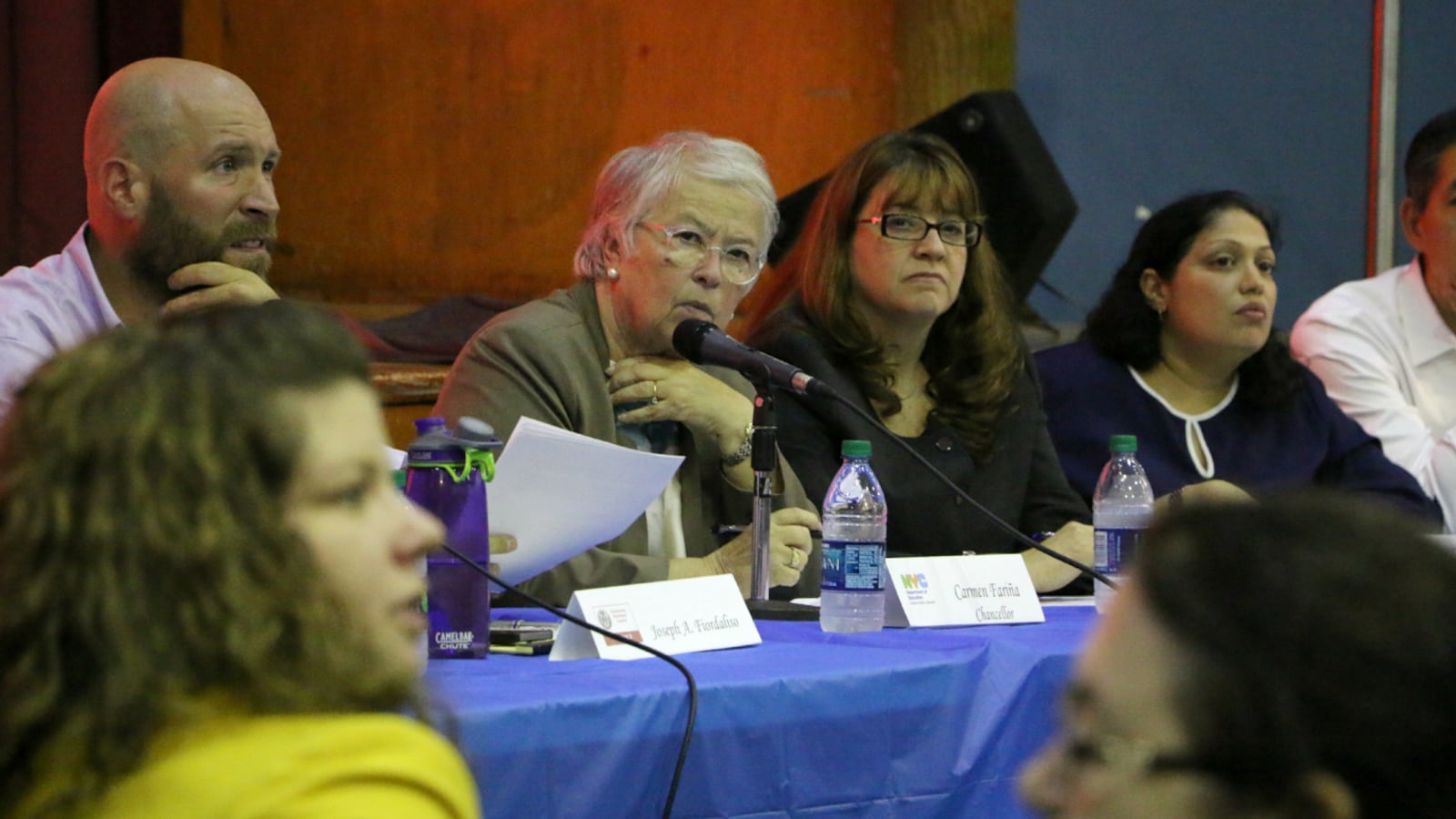The Upper West Side is a district of stark class divisions: While less than 10 percent of the students at some middle schools come from low-income families, nearly 100 percent do at others.
But now, the local superintendent has a proposal meant to narrow the divides in District 3, which also includes southern Harlem.
The plan, which Superintendent Ilene Altschul has recently floated to some principals and the district’s education council, is for each middle school to enroll at least 30 percent low-income students. That would represent a significant increase for several schools, which could push affluent students to a wider range of schools across the district — a change many of their families are likely to resist.
The idea is one of a growing number of bottom-up plans to promote integration in New York City, which has one of the nation’s most intensely segregated school systems. While some individual schools have adopted new admissions policies, no entire districts have yet.
But at the prodding of local principals and parents, several superintendents are looking to change that. Since they can control enrollment policies across many schools, they are uniquely positioned to advance large-scale integration plans — especially under Chancellor Carmen Fariña, who has invested new power in superintendents while outsourcing the work of integration to local leaders.
“The role of superintendent is critical,” said David Tipson, executive director of the integration advocacy group New York Appleseed. “Superintendents have a unique ability to call principals together and exercise real leadership.”
The average poverty rate among District 3’s 19 schools with grades six through eight is about 56 percent. Yet the rate at individual schools varies widely: At six schools, less than one-third of students qualify for free or reduced-priced lunch. At 12 others, two-thirds or more do.
Altschul’s idea would most directly impact the six schools that enroll the fewest low-income students. She has not publicly explained how those schools would boost their numbers, and a spokesman said she was not available for an interview this week.
But one city-endorsed method is to reserve a portion of a school’s seats for a targeted student group. If that were to happen, some affluent students who apply to those schools would likely be routed elsewhere in the district.
That would help break up the concentration of low-income students at some middle schools and affluent ones at others, but it could also provoke a backlash from wealthier families who feel they are losing spots at the most sought-after schools.
Some parents have already been pushing for an integration plan for the district’s elementary schools that would involve abolishing their zone lines. But that “controlled choice” plan has faced skepticism, and when the city proposed redrawing the zone lines around just two schools last fall, parents at one of the district’s wealthiest schools blocked the changes. Some of those parents said they would move or pay for private schooling is they lost access to their preferred school.
Any plan to better integrate the district’s middle schools would also have to grapple with the admissions policies at the schools that currently serve the fewest low-income students. Those schools screen students using entry exams, musical auditions, or a review of grades, test scores, and other measures. Those schools would either need to recruit more low-income students who meet their requirements or change their rules.
Altschul has discussed the enrollment goals with principals in a voluntary diversity group, and on Monday she shared the idea with a committee of District 3’s education council. A department spokesman said the discussions will continue through the fall and will include officials from the education department’s enrollment office.
John Curry is the longtime principal of Community Action School, a middle school on West 93rd Street where more than two-thirds of students qualify for subsidized lunch. He said that part of the reason for the district’s segregation is the tendency of affluent white parents to apply to just a handful of district schools.
But if an integration plan shifted some of those families to other schools, their children would continue to excel academically while also learning to work with a more diverse group of classmates, Curry said.
“This might be frightening to some principals and parents to have a big shift,” he said, “but once this happens, I think it will be to the benefit of everybody.”
The district council’s middle-school committee chair, Kristen Berger, said there is a clear need for the district to more evenly distribute low-income students. But she said she wants more information about how Altschul’s idea would work.
“I certainly am happy we’re looking at diversity issues,” she said, “but I want to make sure parents are fully informed of what’s going on.”
Other districts are also exploring integration plans with the help of their superintendents.
Parent-led groups in Manhattan’s District 1 and Brooklyn’s District 13 are pushing for controlled-choice admissions systems; in each case, the local superintendents helped secure state grants and have been involved in the planning. And in Brooklyn’s District 15, Superintendent Anita Skop said she is in discussion with several middle-school principals about ways to enroll more low-income students.
Chancellor Fariña, who recently invited any school that is interested to submit diversity plans for the department to review, has so far let superintendents spearhead the development of district-level plans. While some critics have called for more top-level leadership, Fariña has made clear that she prefers to let districts come up with “organic” integration plans rather than forcing plans “down people’s throats.”
“Increasing diversity at our schools is a priority,” department spokesman Will Mantell said in an email, “and we’ve invited superintendents and principals to work with their communities to develop diversity strategies that meet their unique needs.”

